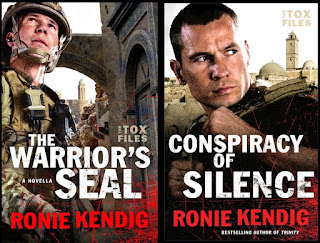Microscopic. Micro-changes. Micro-expressions. They’re little pieces that cumulatively make a big difference. That is true of writing and of suspense as well—we have micro-tools for fine-tuning suspense (a scene or a whole novel).
Suspense is not merely someone or some city in danger. There is more involved in creating suspense than putting a weapon in a villain’s hand or having the heroine fighting for her life. Outside the plot and your characters, suspense is nuanced throughout a story using many techniques, but we’ll focus on two: word choice & placement, sentence/paragraph length and pacing.
Don't use words too big for the subject. Don't say 'infinitely' when you mean 'very'; otherwise you'll have no word left when you want to talk about something really infinite. ~C. S. Lewis
The point? Be intentional with your words. Word choices should:
- Reflect the pace – the more general the word, the more benign the impact. Make them matter!
- Reflect your character – your characters should not all sound alike
- Reflect the mood – use more intentional words to mirror what your character is feeling of what’s being done to them. Our word choices change when we’re frustrated or angry; so should your character's words.
Consider word choice placement. In my “Mind Magic” workshop, we talk about “white/negative space,” a marketing/design concept that capitalizes on the negative (white) space of a design, letting the audience’s brain naturally fill in the rest. Also, speed readers are often taught to read the beginning and end of a sentence, and the beginning/end of a paragraph and then let their brains fill in the rest.
 |
| Negative Space forms face |
By being intentional with word placement, writers can use the white/negative space concept to capitalize on what readers’ brains do naturally—fill in the rest—to create hooks. We’re taught to do this at scene and chapter breaks, but we should also be more intentional with word placement throughout our scenes and chapters. We have stronger words now that we don’t want to bury in the middle of a sentence or paragraph. If you have to, rearrange so the stronger words are more easily detected and a quick (often unconscious) first impression of what’s coming is engaging.
Another topic in the "Mind Magic" workshop is length, which applies to blogs, articles (ahem), books, speeches, and so on. Ultimately, no matter if it’s a sentence or a paragraph, length determines viability and interest. Think about Twitter, which restricts tweets to 140 characters. Today’s society wants things faster, and we need to keep that in mind when writing scenes. Here are a few tips for brevity in writing:
- Monitor Sentence/Paragraph Length – Make it as simple as possible for a reader to move through and enjoy your story. Sentences should be a natural length and there should be a variety of lengths as well. It’s a good idea to break narrative passages into smaller chunks and ensure that each is vital to the story.
- Fragments Are Our Friends (Sometimes) – it’s okay to cut a sentence short if it fits the character, pacing of a scene or chapter, or the mood (more suspenseful). Fragments are wonderful for creating a jarring presence, which is perfect for action or surprise.
- Shorter Sentences Create Movement – Shorter sentences are read faster (obvious, huh?) paragraph and a sentence are great ways to increase the reading speed, giving the reader a sense of faster movement with the characters.
- Longer Sentences Allow for Breathing – if you’ve amped up a scene and sliced/diced sentences, then draw it back down after with longer sentences that allow your readers’ breathing to slow. Think of it as the giddy (or nervous) exhale of relief after a roller-coaster ride.
Suspense nuances really ratchet up the tension and your reader's heart rate! Were these tips helpful for you? Do you have a question for Ronie to address about writing suspense? Comment below!
TWEETABLES
Micro Tools of Suspense by Ronie Kendig (Click to Tweet)
Be intentional with your words~ Ronie Kendig (Click to Tweet)
TWEETABLES
Micro Tools of Suspense by Ronie Kendig (Click to Tweet)
Be intentional with your words~ Ronie Kendig (Click to Tweet)
* * * * *
 Ronie Kendig is an award-winning, bestselling author who grew up an Army brat. After twenty-five years of marriage, she and her hunky hero husband have a full life with their children and a retired military working dog in Northern Virginia. Ronie can be found at:
Ronie Kendig is an award-winning, bestselling author who grew up an Army brat. After twenty-five years of marriage, she and her hunky hero husband have a full life with their children and a retired military working dog in Northern Virginia. Ronie can be found at:
Facebook (www.facebook.com/rapidfirefiction)
Twitter (@roniekendig)
Goodreads (www.goodreads.com/RonieK)
Instagram (@kendigronie)
Pinterest (http://www.pinterest.com/roniek/)!
Twitter (@roniekendig)
Goodreads (www.goodreads.com/RonieK)
Instagram (@kendigronie)
Pinterest (http://www.pinterest.com/roniek/)!
CONSPIRACY OF SILENCE (Tox Files #1) releases Dec 6th and was given 4.5 stars & named a TOP PICK by RT BookReviews!
"...fast-moving, roller-coaster thriller..." ~Booklist
"Kendig keeps the tensions high and the pace lightning fast, with military action scenes worthy of Vince Flynn." ~Publishers Weekly















Love this. I hadn't thought about how intentional we are with our words, especially in writing. Great insight, Ronie :-)
ReplyDelete